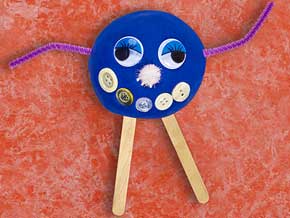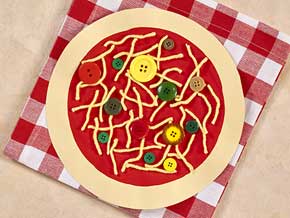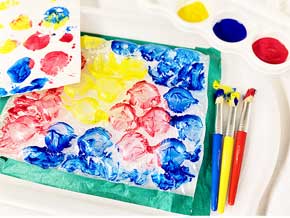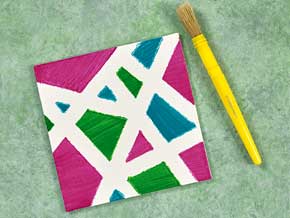What's All the Fuss About Process Art?
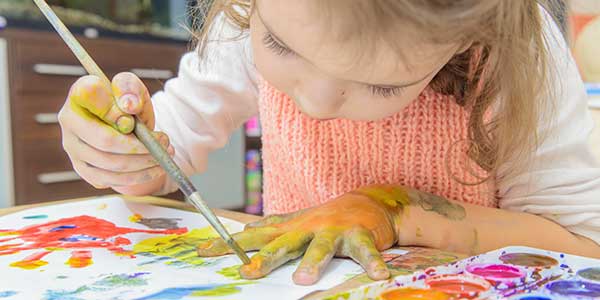
What is Process Art?
You may have heard the term “process art” before, but might not know what it is, or how to use it in your classroom, or explain it to children’s caregivers. Process art is child-led art that is focused on the experience of exploring materials, tools, and techniques, rather than art that focuses on producing a finished product. There are no step-by-step directions given, nor finished products to emulate, and each child’s creation is unique and individual to them. So that you can see the differences between process art and the more traditional “product art,” we’ve shared some examples of both.
Example of Process Art for Preschoolers
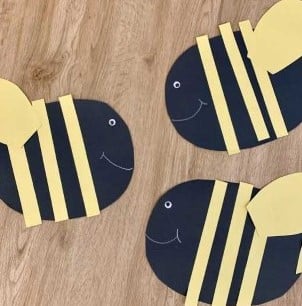
We recently led a teacher workshop at a local preschool about process art. We began the workshop by splitting our group in two and asking each group to create a bee out of materials provided. The first group, the “product art” group, was shown a sample bee and given pre-cut circles for beebodies, pre-cut stripes, wiggle eyes, and materials for attaching the pieces. One of us sat with these teachers and showed them, step-by-step, how to create their bees. These adults watched silently as we modeled each step and then assembled their own bees. They were finished in about five minutes, and each bee looked remarkably similar. It was a great lesson in following directions.
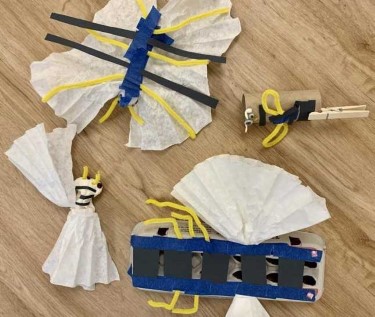 Our other group, the “process art” group, was given photographs of real bees, a variety of open-ended materials, such as construction paper, wiggle eyes,craft stems, coffee filters, some recyclable materials, school craft glue and kids craft scissors. The only directions we gave these teachers was to create their own bees using the materials provided. They gathered art supplies, chatted about their ideas, and got right to work. We saw them engaged, enthusiastic, and laughing with each other as they worked. They kept working for more than 20 minutes (until we cut them off so we could move on to other things at the workshop), and their finished products were each unique. When the teachers shared them with our group, we heard stories of inspiration (“I remember once I was stung by a bee!” “My grandmother used to keep bees in her backyard.”) and exclamations about how much fun they had working on these bees.
Our other group, the “process art” group, was given photographs of real bees, a variety of open-ended materials, such as construction paper, wiggle eyes,craft stems, coffee filters, some recyclable materials, school craft glue and kids craft scissors. The only directions we gave these teachers was to create their own bees using the materials provided. They gathered art supplies, chatted about their ideas, and got right to work. We saw them engaged, enthusiastic, and laughing with each other as they worked. They kept working for more than 20 minutes (until we cut them off so we could move on to other things at the workshop), and their finished products were each unique. When the teachers shared them with our group, we heard stories of inspiration (“I remember once I was stung by a bee!” “My grandmother used to keep bees in her backyard.”) and exclamations about how much fun they had working on these bees.
Right away you can probably see some stark differences between the two groups, and you are probably thinking about what skills children might be gaining from each task. The first group, the “product art” group, got a great lesson in following directions and spatial awareness. The teachers had to sit quietly while the leader gave directions and then created their own bees in the same way. They also had to think about spatial awareness as they figured out where to place each part of the bee. Was this a useful lesson? Absolutely, if you’re looking to teach those skills.
The second group, the “process art” group, worked on their language skills as they conversed with each other about bees, the materials given, how they were going to make their own bees, and made connections to their own life experiences. The teachers gained problem solving skills as they arranged the materials and figured out what worked and what didn’t (“Will my wings stick on if I use this tape? How can I cut this piece of paper to look like a bee stinger?”). They also gained confidence in their abilities and a sense of pride in their work, as they shared their work with their peers and the facilitator. Each person created something different and unique. They were also engaged with the materials for a much longer time. Was this a useful lesson? Absolutely, and probably more so than the “product art” lesson if you are hoping to build skills of independence, language growth, problem solving, and pride in one's abilities.
How to Use Process Art in the Preschool Classroom
Ready to get started adding process art to your classroom? Here are some of the basics:
![]() Provide a variety of open-ended tools and materials that do not have a right or wrong way to use them.
Provide a variety of open-ended tools and materials that do not have a right or wrong way to use them.
![]() Allow children ample time to experiment with materials while also letting them leave the area and then return to work with the materials at a later time.
Allow children ample time to experiment with materials while also letting them leave the area and then return to work with the materials at a later time.
![]() Try setting out real life examples, photographs, books, or other artifacts for inspiration.
Try setting out real life examples, photographs, books, or other artifacts for inspiration.
![]() Make it a fun and joyful experience. Say yes to more paint, more colors, and more materials. Add music while exploring or taking it outside and incorporating nature.
Make it a fun and joyful experience. Say yes to more paint, more colors, and more materials. Add music while exploring or taking it outside and incorporating nature.
![]() Observe, ask questions, and document what the children are doing so you can see what’s needed to sustain their interest.
Observe, ask questions, and document what the children are doing so you can see what’s needed to sustain their interest.
Here are some open-ended materials to get you started:
• Craft stems (or pipe cleaners)
• Feathers
• Buttons
• Beads
• Paint and a variety of brushes and tools
• Materials from your recycling bin (be sure to clean these first!) Objects found in nature, such as seeds, twigs, rocks, and shells
• Scissors
• Glue
• Tape
Check out Becker’s exclusive book set, Happy Art: Books to Inspire to inspire creativity in your preschool classroom. We hope you’re inspired to try some process art in your classroom. Stay tuned for more process art inspirations in future blog articles. Happy creating!
Check out our webinar recording to learn more about Process Art!
Looking for more inspiration? Check out these art activities below!
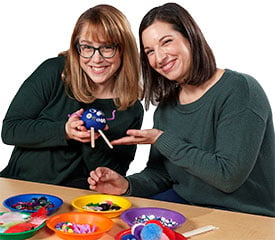
With over 30 years of combined teaching experience between them, early childhood educators Nicole Werther and Rachel Miller know just how to keep your young children engaged—let them take the lead! Their small business, Backyartists, encourages creative thinking and discovery through the magic of process art and sensory play.
Rachel and Nicole are Becker's Creative Arts Content Advisors and have used their knowledge of process art to create resources, such as blog posts and activity ideas, to inspire teachers and parents when planning projects with the Artful Goods materials.
They also offer playgroups and classes in the Boston area. Check out Backyartists.com for the most up to date offerings.

